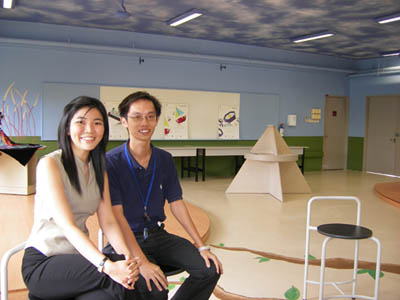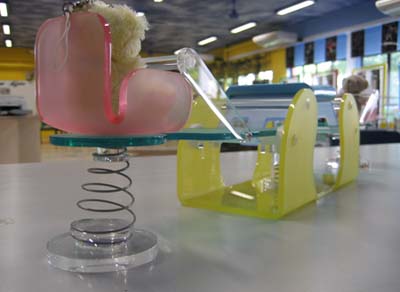Out of the Box
Feeling the lack of good ideas in the classroom? Maybe the problem’s not how students think but where they do the thinking. That’s what the teachers at Compassvale Secondary School found out through an action research project on improving their students’ creativity.
Faced with sagging scores in the “ideation” component of their students’ O-level results, a group of teachers from Compassvale Secondary School (CVSS) launched an action research project to find out how to improve creative thinking in Design and Technology (D&T), Visual Arts and Home Economics. Their findings showed that the first step towards inspiring creativity was also the simplest: finding the right location.

“For the kids, the classroom was just not a source of inspiration to think out of the box,” says D&T teacher Tan Tiah Hui (picture above, right). “It was after looking at the student interviews, discussions and observations of the teachers that we realised it could be the environment that was stifling their creativity.”
While students were definitely not short on ideas, most of their proposals were based on existing works or things that they’d seen before. “Their ideas were too simple,” explains Cheh Seok Buay, who also teaches D&T. “Let’s say we ask our students to design a penholder. What they’d normally do is draw a rectangular box, or at most a cylindrical shape, then they’ll say that you can put your pens inside!”
Both Tiah Hui and Seok Buay believed their students’ ideas were so constrained partly because the regular rooms used for D&T classes were drab and uninspiring – students sat on hard stools amidst machinery and tools. Thus, their main aim in doing an action research study was to find out exactly what students thought would motivate them to be creative.
The teachers conducted interviews, held discussion groups, and even had students draw what their “ideal room” would look like. After which, they brought their findings to the school management and obtained sufficient funds to build a classroom especially designed for students to meet in, discuss and brainstorm ideas for their projects.
Today, the ideation room is in full use, with various areas and features conceptualised and created by the students and teachers themselves. The cherry on the cake is the various D&T awards clinched by their students this year (see box story below), bearing testimony to the success of the D&T teachers’ efforts.
“Ideas cannot be just thoughts,” says Seok Buay. “To a certain extent, it has to be about bringing the child to discover on their own. It is something that they must experience for themselves.”
With the room approaching its second year since completion, the teachers are happy with the fruits of their labour. It is their hope that the room will continue to allow more students to find their “AHA!” moments in years to come.







